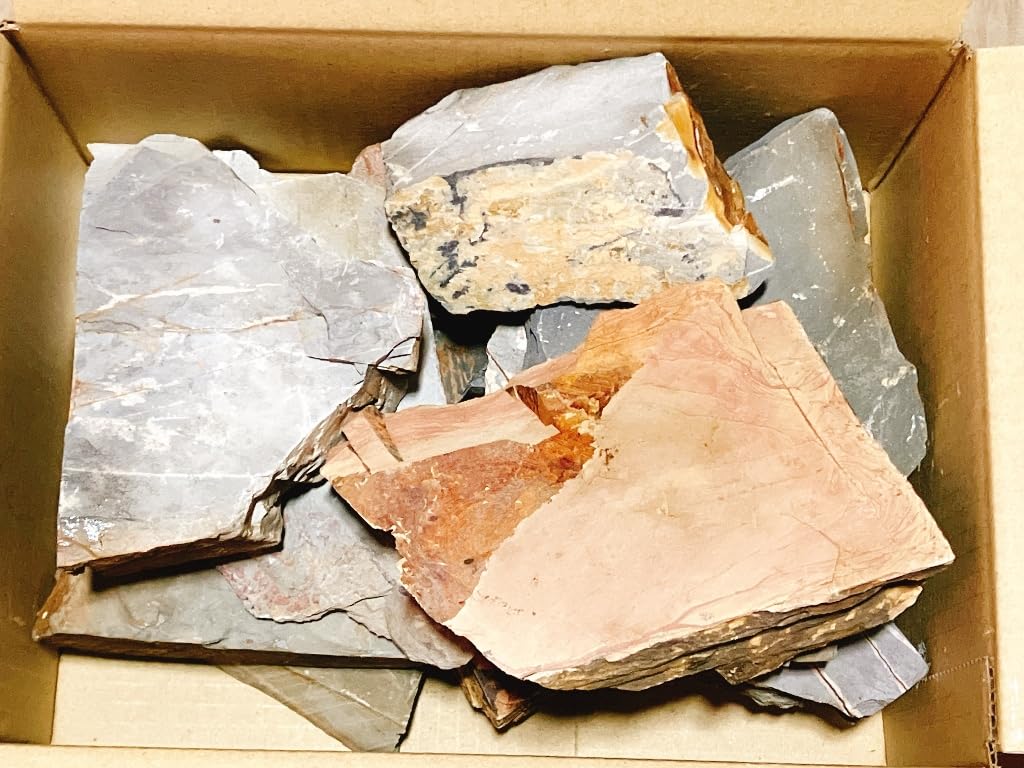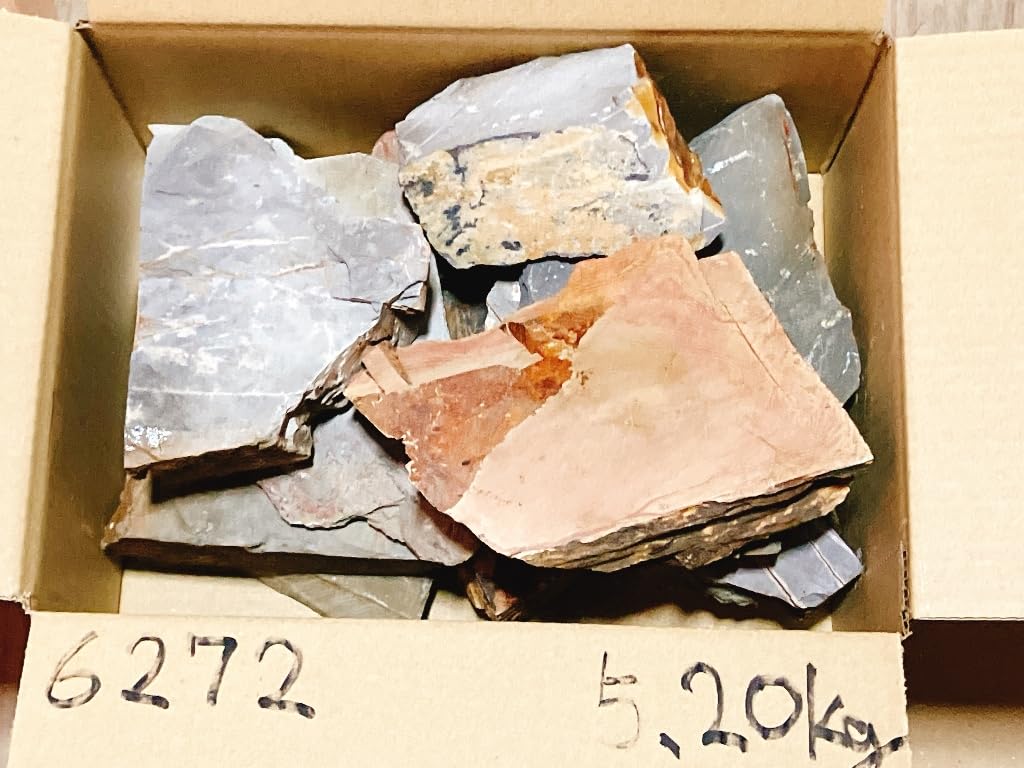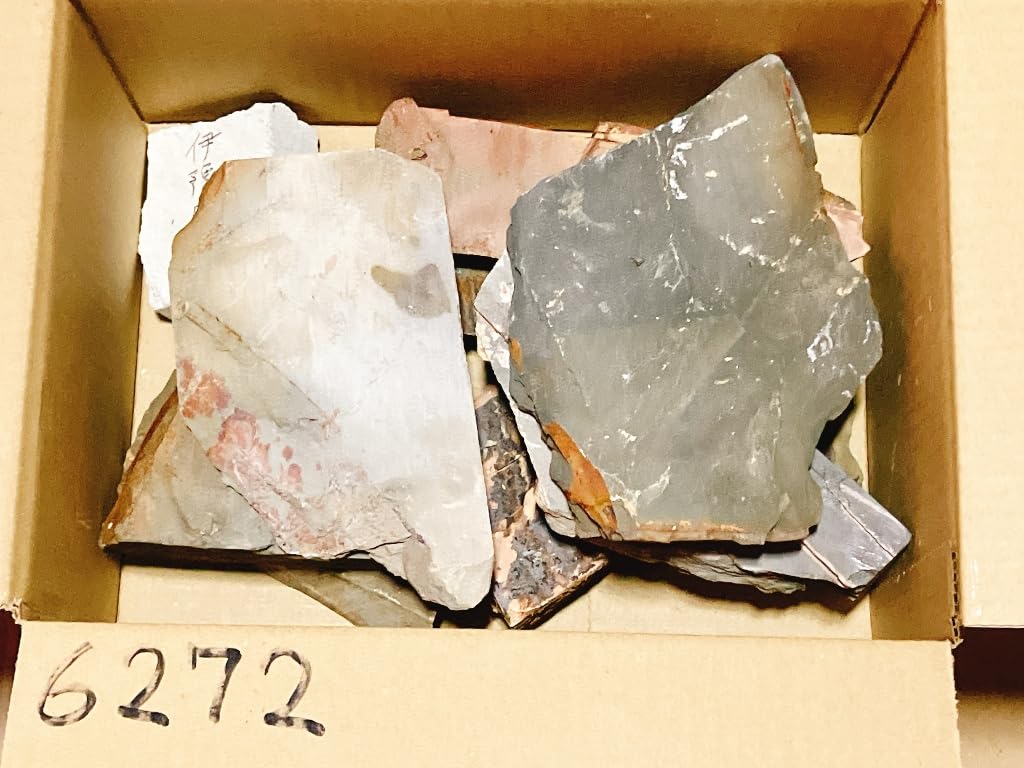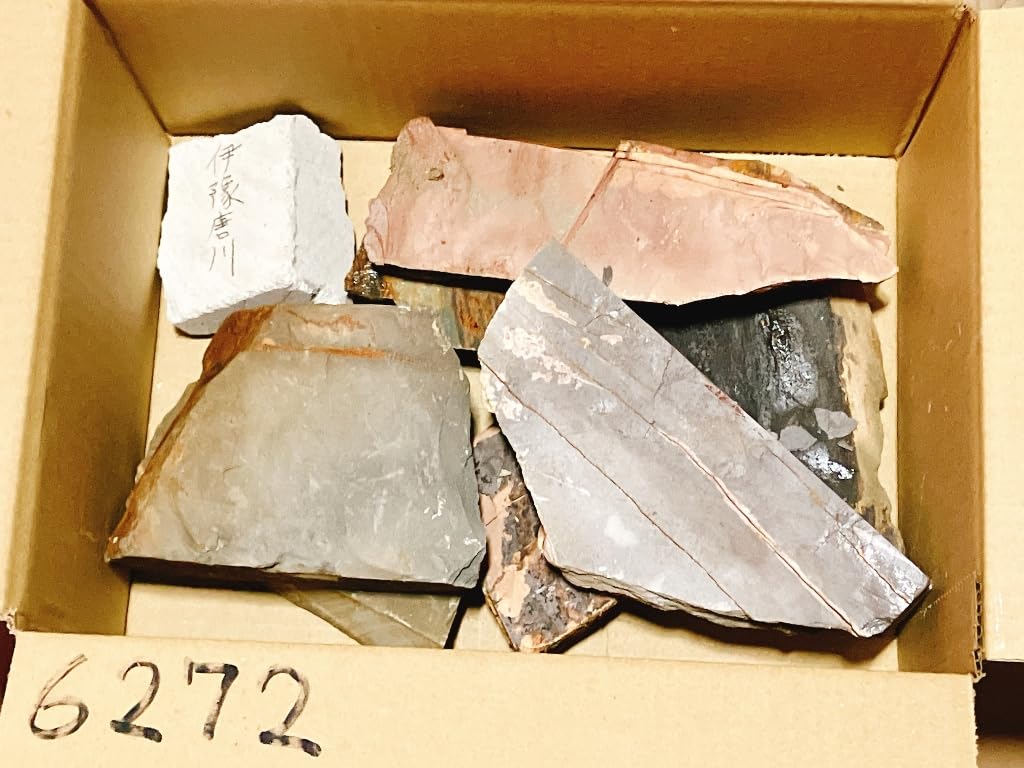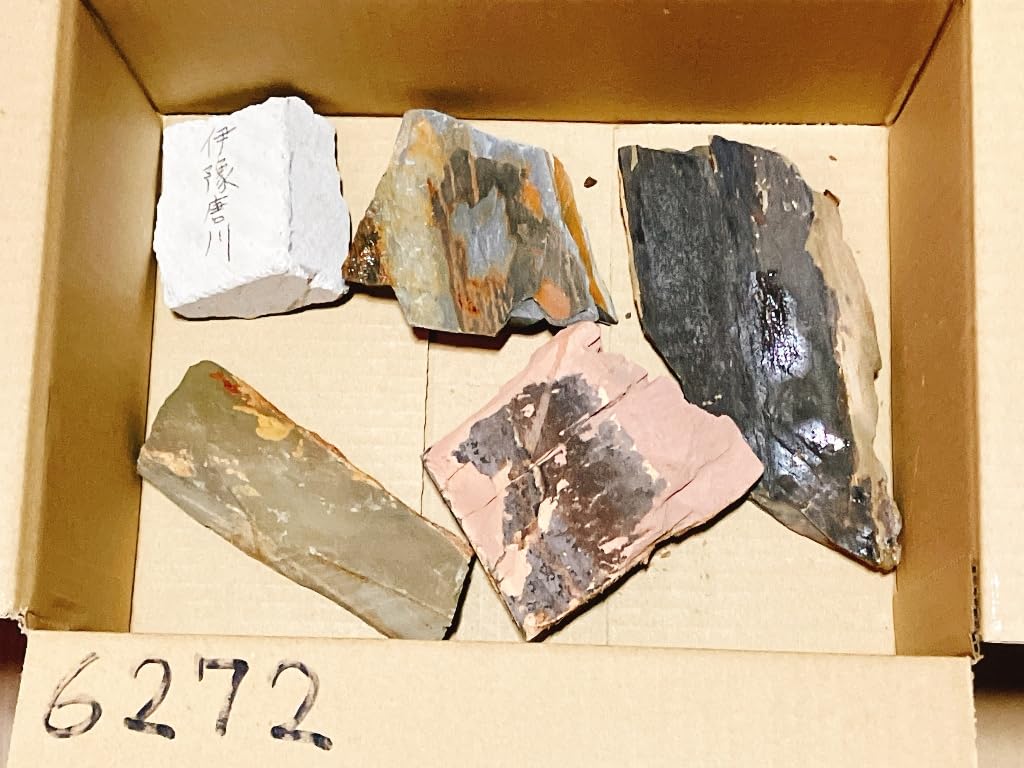The size is the outer dimensions of the box, and the weight includes the box and forged stones. These are mid- to high-grade branded whetstones from Iyo Province and Shomotoyama Yamashiro Province, with the miners themselves hand-writing their names to prevent false origins and counterfeits. The forged stones, as shown in the image, have been sealed in the margins. A collection of branded stones forged by craftsmen from Yamashiro Province. A box that will help you develop an eye for spotting false origins. There is one stone each from Iyo and Tamba, but the names are not written on the stones, so please feel them and judge for yourself based on their physical properties. For avant-garde people who also want to practice and practice.
Comes in a 60-size box. Approximate box dimensions: 26 x 20 x 13cm. This exceptionally large, high-quality gemstone is forged and dropped. It doesn't include the much-requested gacha element. You will receive the gemstone exactly as shown in the photo.
Please polish it to a flat surface. One from Iyokuni will be used for finishing polishing or for Nagura, and one from Tambani will be used to check the quality and physical properties of the blades that cannot be forged. In the past, the ratio of Umegahata blades from Ukyo Ward, Yamashiro Province to Tambani was 1:10 within the industry.
Siliceous slate from Umegahata, Ukyo Ward, Kyoto City, Yamashiro Province, #6,000-24,000 grit. The harder the stone, the more grinding is required, but the more likely it is to be finely polished. The rounded, continuous striations ensure long-lasting cutting at about 70% of the threshold, and with an artificial grindstone grain ratio, it is difficult to achieve a dull mirror finish, making it easier to bring out the contrast resulting from differences in forging joints, material, and carbon content.
The blacker the rock juice, the harder and finer the stone tends to be. The harder the stone, the less sharp it becomes, so we perform the "Konagura-gake" process each time we sharpen it, depending on the purpose and level of skill.
The power of locally produced products!!
The box measures approximately 26 x 20 x 13 cm (60cm). The weight is the package weight. Please use this as a reference for size comparison.
The clear grain pattern makes it easy to work with and increases yield when cutting into smaller pieces. Please try cutting and cutting for yourself and see for yourself the difference in the properties and performance of the grinding stone.
There are various types, sizes, and shapes. If the stone is large enough for the blade you are sharpening, you can use it as is. If it is not, you can break it into smaller pieces and use it for sharpening swords.
It consists of only the first-class deposits in the easternmost part of Ukyo Ward, Kyoto City, plus comparative samples.
Umegahata whetstones can only be found in the area from Umegahata Mukonochicho, known for Nakayama and Beniyama, through Okudonocho, the king of the Suita formation, and on to Shobudani, famous as the birthplace of Kyoto whetstones.
These stones are not just bulky stones made from less than average quality, but you can tell they are genuine by the way they split. This is the kind of set you'll find. The stone forging was primarily carried out by trainees under the supervision of a director with over 15 years of experience in the Yamamoto style of forging. We believe they were skillfully split, selected, and turned into a vibrantly colored variety, so please take a look at the photos.
We encourage you to try breaking it yourself and see the vast difference in physical properties and the striking difference in color saturation. (Prepare a flathead screwdriver, hammer, safety glasses, gloves, etc.)
If you have one soft red pin, you'll be lucky. (Sorry, this is lot dependent.)
Flat, film-like flake-like mud easily emerges from this clear-laminated ore.
The abrasive grains are arranged in a directional pattern on the flakes, providing surprisingly strong abrasive power.
When the water injection is restricted, the particle size increases as the flakes are crushed.
The sliding between the flakes is facilitated by the lubricating action of crushed slurry of sticky feldspar and mica minerals, giving the flakes a light and smooth gliding sensation.
If we look at history, the heavy stone walls of Osaka Castle were made by covering them with wet kelp, and then dragging them down. The idea is to replace the kelp with crushed flakes.
If there are too many flakes that are not completely crushed and too much pressure is applied when sharpening, the overlapping flakes and the strong grinding ability of the Yamashiro region will make post-processing easy, but it can create shallow shrinkage marks in the soft base metal.
By adjusting the amount of force, sharpening angle, amount of slip and amount of water added, the appearance of these shallow shrinkage marks can be greatly improved.
We recommend this method because it allows you to easily evaluate your own level of skill development by visually checking the results.
In the early stages of becoming an expert flake user, you will find the aforementioned kelp attack to be extremely helpful against undertrained flakes and those tough, stiff flakes from other countries.
You may find the motivation to try again with a tough, unruly blade that you have given up on or shelved until now. In the first place, the domain of a master stonesmith is to discard thickness and remove the unruly grain by forging...
In the market, there is a tendency for shortcuts to be taken in manufacturing, where thickness and size are everything, resulting in large profit margins, so there is likely to be a fair chance of opportunities to use soft red pin slip.








